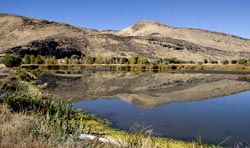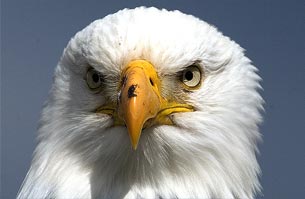Photo Exploration
We explore for the sake of discovering what’s over the next hill and we always take the camera along. That’s akin to tourists taking photos of all kinds of things. Photos, or video, can make outstanding documentation, but we wouldn’t call what we generally do ‘photo exploration.’ Instead, ‘photo exploration’ involves setting out with photography or videography as the basis of your adventure, not just associated with it.
Landscape Photography
Photography can be the basis for a wide range of adventures, from your backyard to anywhere in the world. The most obvious genre is landscape photography. Here, the adventure comes from the search for the perfect place and time to shoot the most beautiful landscape you can find. You may be at a particular place for any reason, but when you grab your camera and set out to get a great landscape photo, you are photo exploring. You will need to explore to find the best and most interesting view, the time of the best possible lighting and so on. One tip about lighting, there is an iPhone app called TPE (The Photographer’s Ephemeris). It will help you, for example, by telling you when the sun will come over the hill and strike the object of your photo.
Close-up Photography
Another approach is close-up photography. With this approach you are not looking for the ‘big picture’, but for the details in the landscape. Often within a few inches of your camera’s lens. Our favorite in this genre is wildflower photography. The adventure is in getting to the wildflowers when they are in full display. Our article on the wildflowers of Crater Lake National Park makes that easy if you happen to be visiting the park. Finding some of those wildflower displays in order to create that article required more exploration. Again, getting into position for the best view and capturing the best lighting is all part of the adventure. Of course, close-up photography isn’t limited to wildflowers. You might shoot mushrooms, rocks, insects, or even patterns or shapes that are a part of a larger object.
Wildlife Photography
Wildlife photography is another avenue that will get you out exploring. If you want to capture photos of game animals you need the same level of knowledge as if you were hunting for these animals with a gun. Some people even rig up their cameras on a gunstock sort of device like the Stedi Stock Shoulder Brace Optical Stabilizer or the Ultimate Arms Hands Free Shoulder Pad Support System, available from Amazon. These devices stabilize your camera, so that you can get clear photos even with the telephoto lenses typically used for wildlife photography. If you are not a hunter, you might try going with your hunter friends to learn how to find and stalk the animals to get in position for a good shot. Wildlife is, of course, not limited to big game. Many people love to photograph birds, reptiles, amphibians or anything else that moves. Whatever you want to shoot, you will need to do some exploring to find your animal.
Planning Your Adventure
Photo exploration, like any adventure requires a certain amount of planning. Say, for example, you want to get a landscape photo of Oregon’s Crater Lake from the top of Mount Scott. Climbing Mt. Scott in the winter is a major league dangerous trek. If you’re not properly trained and equipped, you might want to choose a summer photo. That would set the time frame from late July through September for your climb, to avoid the deepest snow. After checking your maps, you will know that Mt. Scott is east of the lake.
With a morning photo, the sun will be at your back. You can use TPI to help figure out how the position of the mountain and the lake will be impacted by sunlight on the day you plan to get out there. That will help you establish the time you want to be in position for your photo. The trail is only about two-and-a-half miles long and only climbs about 1,200 feet, but it does peak at 8,832 feet. That means two things, one, it is not a walk in the park – well, it is, but you know what I mean – and two, take a coat. Even in the summer the weather at 8,800 feet is often windy and cold. You will also need to plan your trip to get to the trailhead.
Once you are at the summit and have your morning photos, you will undoubtably want to capture some sunset photos. That means taking enough food and water to spend the day. Again, TPI can help you determine where and when the sun will set so you can be ready. Taking sunset photos also means you will be hiking down the mountain after dark. That’s not a big problem here, but could be in other places. You might want to plan your adventure during a full moon to make the night time walk safer.
Regardless of the photo you want to capture, give some thought to the enviroment you will be traveling in and plan accordingly. The preparation will make your adventure that much more enjoyable and result in better photos.
Credits
Except as noted above, all photos and text by Jerry Haugen and ©2014 Global Creations LLC, All Rights Reserved.






Leave a Reply